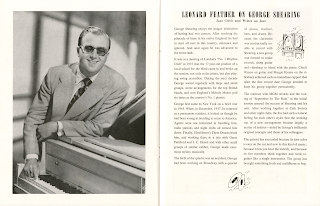Blue Skies
Eddie Baynard And His Bourbon Street Five
Picture of Art Sandly and Album Notes by Tom Teepen
Front Cover Photo by Don Johnson
Gunn Stereo LP 201
Baynard: Cornet and Vocal on "Dr. Jazz"
Jim Campbell: Clarinet and Bass Sax
Mark Lamphier: Trombone
Kenny Schaufuss: Piano
Art Sandly: Banjo
Joanie Riner: Bass
Kenny Hall: Drums
Clarence Hall: Vocal and Piano on "Honeysuckle Rose"
From the back cover: With the exception of the opening number, the tight and precise "March Of The Bobcats," which is the product of a later session, the jazz here was recorded during a lengthy night session March 4, 1968. Most of the tunes come from late in the session when the Bourbon Street Five was warm, loose and swinging easily.
For this recording, the Bourbon Street Five was enriched by the addition of Art Sandly, a jazz veteran who regularly plays with the greats of Dixieland in Chicago, where he is a member of the band at the well known Showboat. He is heard throughout, and his virtuosity is spotlighted in "Blue Skies" Also sitting in is Clarence Hall, Dayton's jazz professor and long a leader of bands in his own right. He sings "Honeysuckle Rose"; the piano work is his, too.
March Of The Bobcats
Blue Skies
Dr. Jazz
South
Basin Street Stomp
Chimes Blues
Yellow Dog Blues
Hindustan
Honeysuckle Rose
I Would Do Anything For You
March Of The Bobcats
Blue Skies
Dr. Jazz
South
Basin Street Stomp
Chimes Blues
Yellow Dog Blues
Hindustan
Honeysuckle Rose
I Would Do Anything For You







































